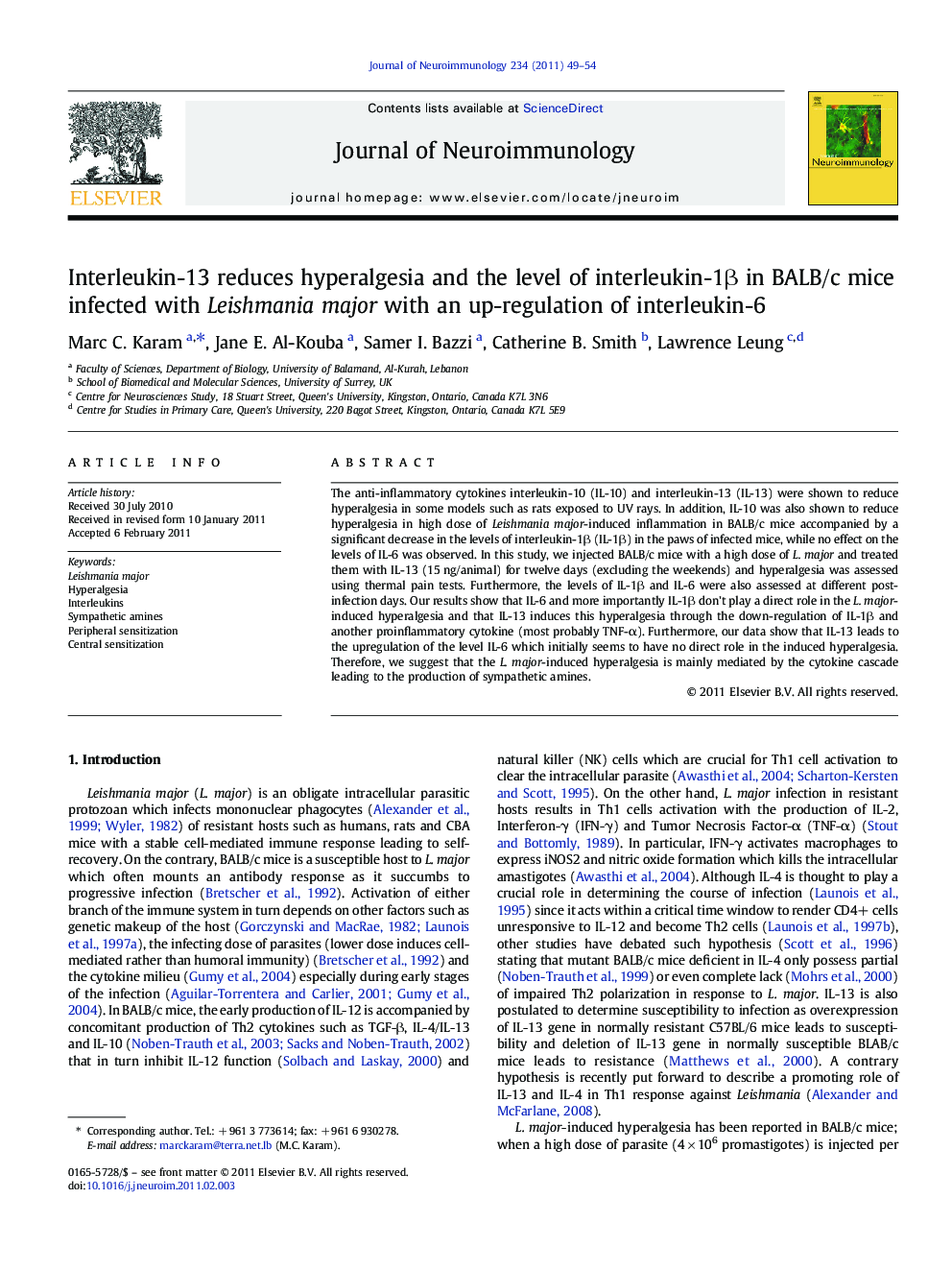| Article ID | Journal | Published Year | Pages | File Type |
|---|---|---|---|---|
| 6020979 | Journal of Neuroimmunology | 2011 | 6 Pages |
Abstract
The anti-inflammatory cytokines interleukin-10 (IL-10) and interleukin-13 (IL-13) were shown to reduce hyperalgesia in some models such as rats exposed to UV rays. In addition, IL-10 was also shown to reduce hyperalgesia in high dose of Leishmania major-induced inflammation in BALB/c mice accompanied by a significant decrease in the levels of interleukin-1β (IL-1β) in the paws of infected mice, while no effect on the levels of IL-6 was observed. In this study, we injected BALB/c mice with a high dose of L. major and treated them with IL-13 (15 ng/animal) for twelve days (excluding the weekends) and hyperalgesia was assessed using thermal pain tests. Furthermore, the levels of IL-1β and IL-6 were also assessed at different post-infection days. Our results show that IL-6 and more importantly IL-1β don't play a direct role in the L. major-induced hyperalgesia and that IL-13 induces this hyperalgesia through the down-regulation of IL-1β and another proinflammatory cytokine (most probably TNF-α). Furthermore, our data show that IL-13 leads to the upregulation of the level IL-6 which initially seems to have no direct role in the induced hyperalgesia. Therefore, we suggest that the L. major-induced hyperalgesia is mainly mediated by the cytokine cascade leading to the production of sympathetic amines.
Related Topics
Life Sciences
Immunology and Microbiology
Immunology
Authors
Marc C. Karam, Jane E. Al-Kouba, Samer I. Bazzi, Catherine B. Smith, Lawrence Leung,
